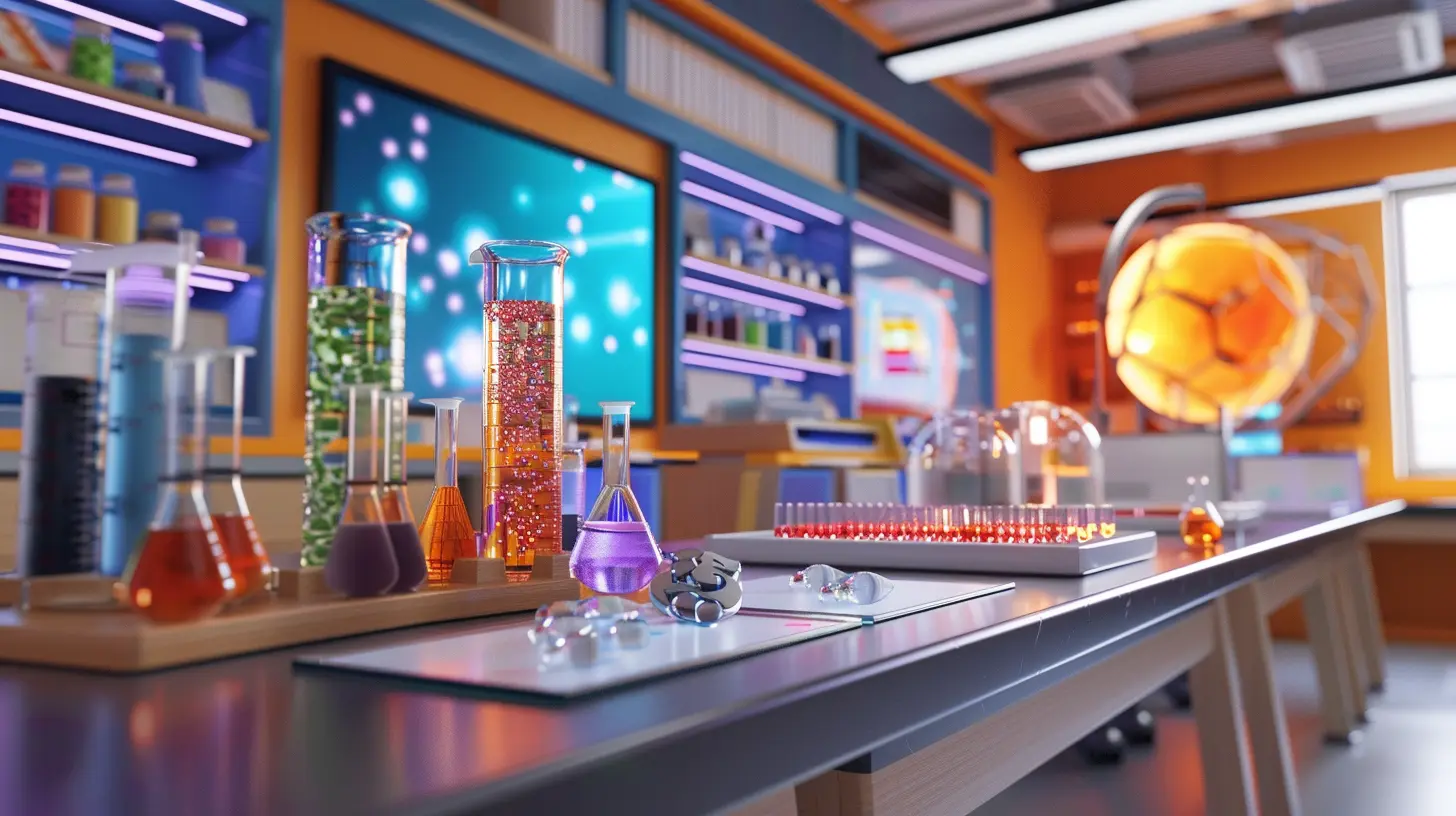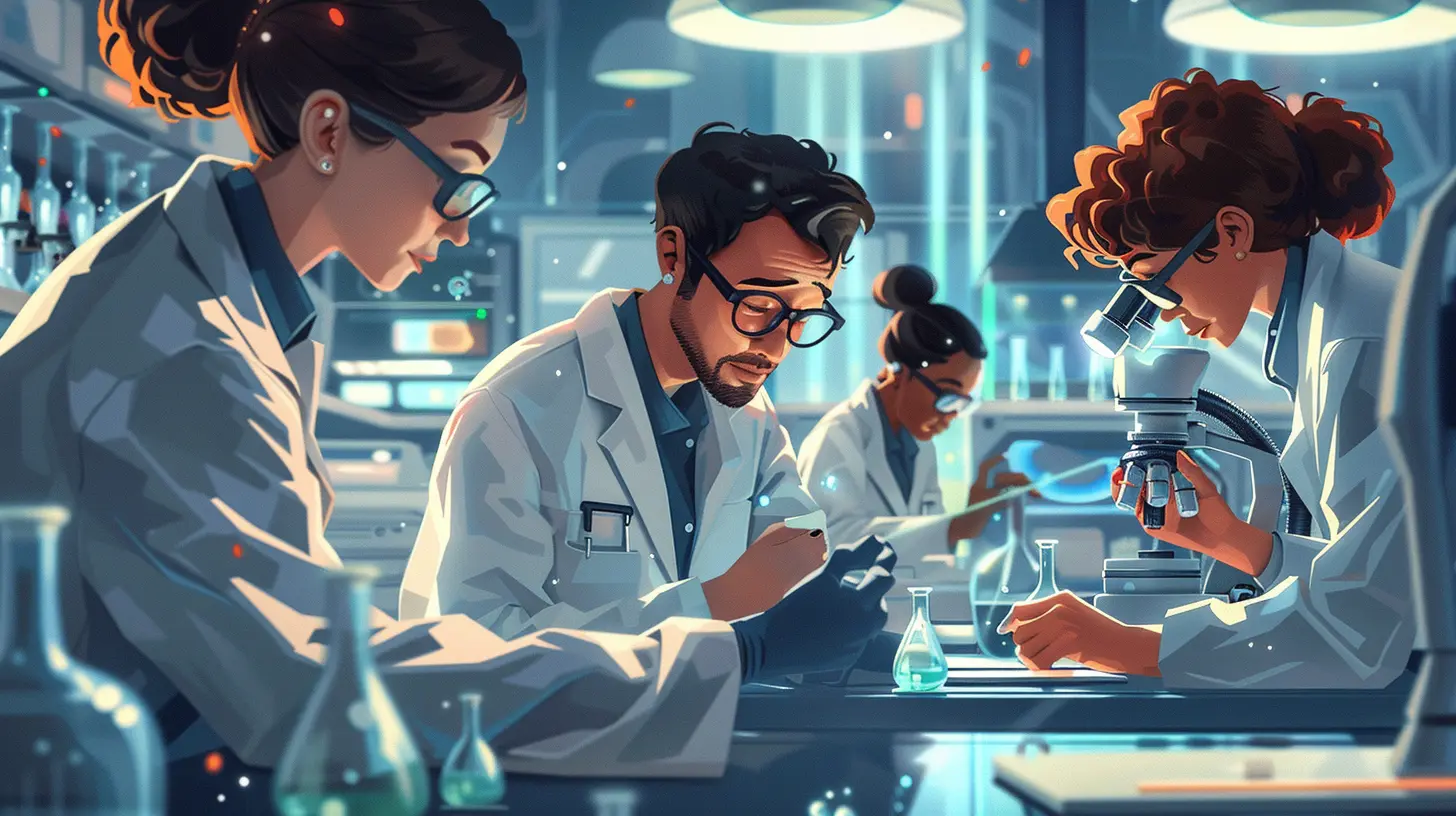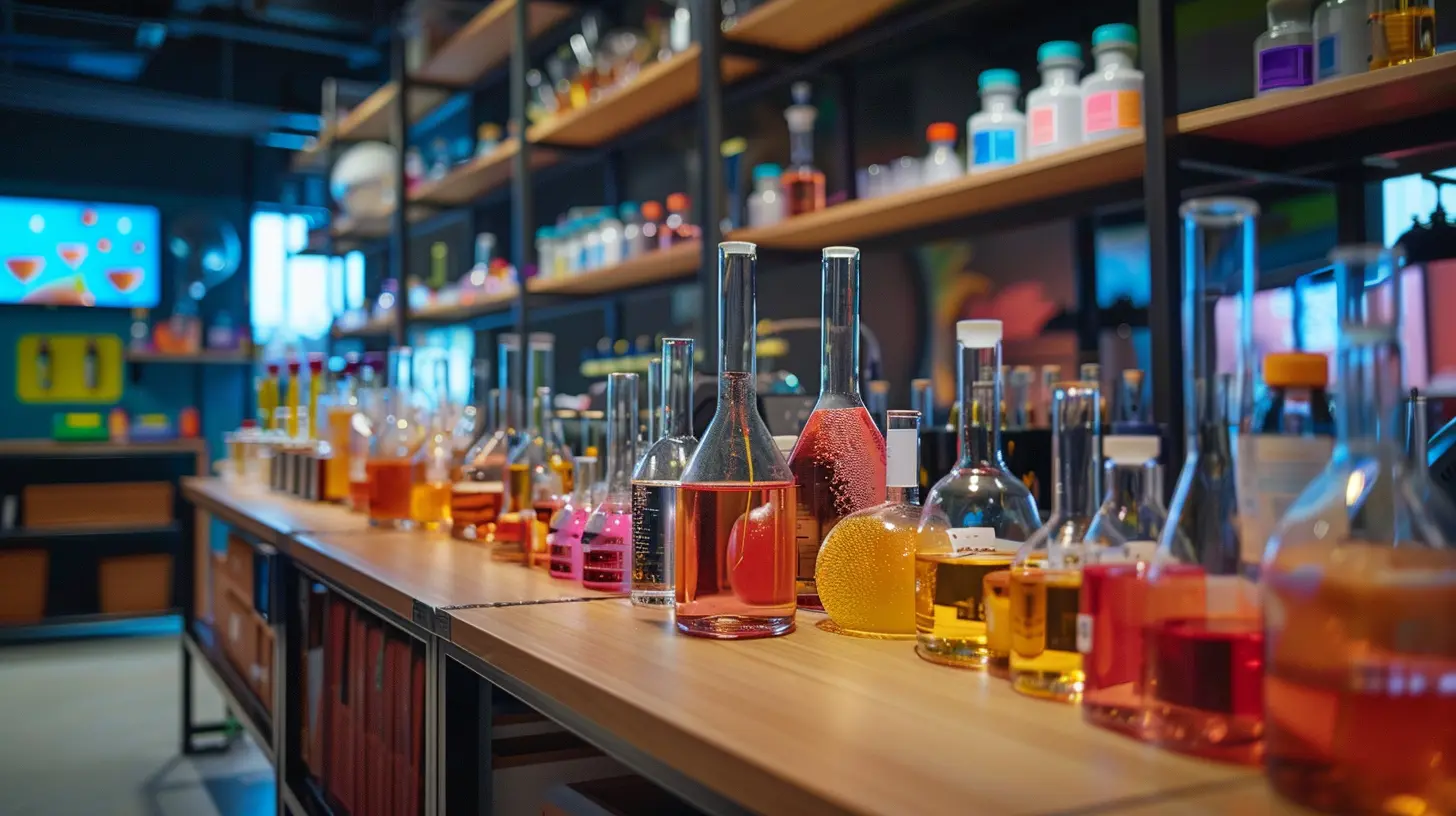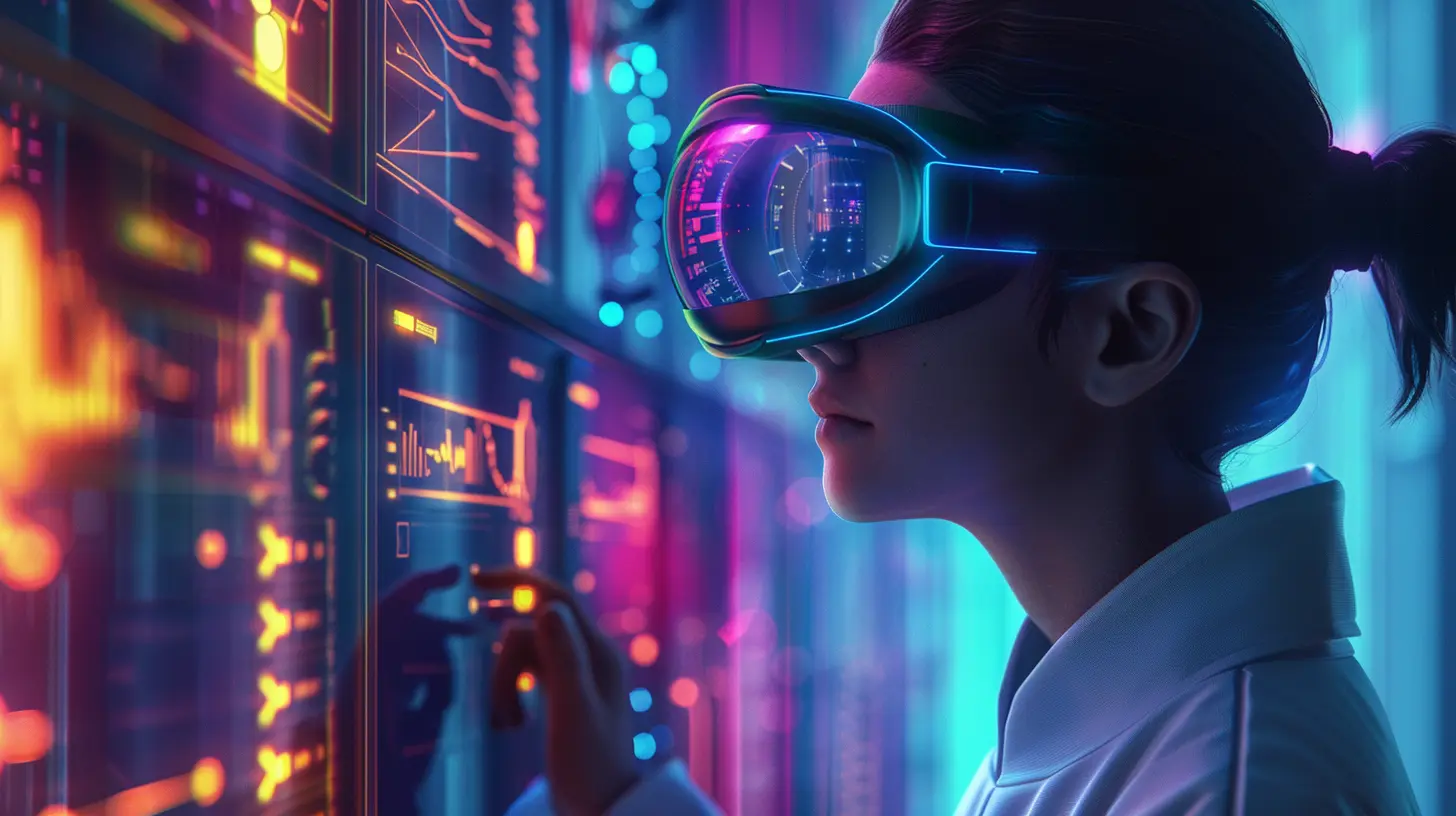Virtual Labs: Bringing Hands-On Science Experiments to Every Student
18 April 2025
Science is all about exploration, curiosity, and hands-on discovery, right? But what happens when access to a physical lab is out of reach? Enter virtual labs! These digital setups provide an exciting alternative, bringing hands-on science experiments to students, whether they're in a classroom or at home. Let's dive deep into the world of virtual labs and how they're transforming the way students engage with science.

What Are Virtual Labs?
Before we go any further, let's clear up what virtual labs actually are. You might be imagining some sort of futuristic, sleek lab in a science fiction movie, but virtual labs are a little more grounded in reality—although still pretty cool.A virtual lab is an online simulation of a real-world laboratory environment where students can perform experiments without needing physical equipment. These labs are designed to mimic the actual process of carrying out experiments, using interactive tools, simulations, and even 3D models.
Think of it like a video game for science. Instead of playing a character, you're conducting experiments—mixing chemicals, observing reactions, and collecting data—all from the comfort of your device. Virtual labs allow students to experiment and learn in an environment that is safe, cost-effective, and widely accessible.

How Do Virtual Labs Work?
Virtual labs work by using software to simulate real-world scientific processes. Students log into an online platform, where they can choose various experiments to perform. These platforms are designed to replicate real lab equipment, like test tubes, Bunsen burners, and microscopes, allowing students to manipulate them just like they would in a physical lab.Many virtual labs also include step-by-step instructions, interactive quizzes, and even real-time feedback. This ensures that students are not only performing the experiment but also understanding the science behind it. In some cases, students can even make mistakes—like adding the wrong chemical or increasing the heat too much—and see the consequences of their actions, all in a safe, controlled environment.

Why Are Virtual Labs So Important?
1. Accessibility for All Students
One of the most significant benefits of virtual labs is that they break down barriers to learning science. Traditional labs can be expensive to set up and maintain. Not every school or institution has the resources to provide a fully equipped lab, especially in underfunded areas or developing countries.Virtual labs level the playing field. All a student needs is a computer and internet access, and they can perform experiments that would otherwise be unavailable to them. Whether you’re in a rural village or a bustling city, virtual labs bring science to your fingertips.
2. Safety First
Let’s be honest: traditional science labs can be a little risky. Handling chemicals, fire, and electrical equipment always comes with potential dangers. Remember that one time in chemistry class when someone accidentally mixed the wrong chemicals and caused a small explosion? Yeah, not great.With virtual labs, those risks are completely eliminated. Students can safely explore and experiment without any fear of injury. If something goes wrong, it’s just a simulation—no harm done. This allows students to make mistakes, learn from them, and try again, developing a deeper understanding of scientific concepts.
3. Cost-Effective Learning
Running a traditional lab can be expensive. Schools have to invest in equipment, chemicals, safety gear, and continuous maintenance. On the other hand, virtual labs require far fewer resources. Once the software is purchased or licensed, it can be used repeatedly by many students without the need for physical supplies.For institutions with tight budgets, virtual labs offer a cost-effective solution to providing quality science education. They reduce the need for consumables and allow for large numbers of students to engage in experiments simultaneously—something that can be difficult to manage in a physical lab.
4. Flexible Learning Environment
Another fantastic feature of virtual labs is their flexibility. Unlike traditional labs, which are tied to specific locations and schedules, virtual labs can be accessed anytime, anywhere. This is a game-changer for distance learning and homeschooling, where students might not have access to a physical lab.Even in traditional schools, virtual labs offer flexibility. Students can conduct experiments outside of class hours, allowing for more independent study and exploration. Plus, students who miss class or need more time to understand certain concepts can revisit experiments at their own pace.

Types of Virtual Labs
Virtual labs come in many shapes and sizes, depending on the subject and level of education. Let's explore a few common types:1. Physics Virtual Labs
Physics labs often involve complex equipment and precise measurements, which can be difficult to replicate in a classroom. Virtual physics labs allow students to experiment with things like motion, force, and electricity in a way that’s both interactive and engaging. For example, students can control virtual pendulums, launch projectiles, and even work with circuits without needing any physical materials.2. Chemistry Virtual Labs
Chemistry is a subject that heavily relies on lab work, but handling chemicals can be dangerous and costly. Virtual chemistry labs allow students to mix chemicals, observe reactions, and perform titrations—all without any risk of spills or explosions. Many virtual chemistry labs also provide tools for analyzing results, such as virtual pH meters or spectrometers.3. Biology Virtual Labs
Biology labs often require microscopes, dissection tools, and other specialized equipment. Virtual biology labs can simulate everything from cell biology to full-scale dissections. Students can explore 3D models of cells, examine slides under a virtual microscope, or even dissect a frog in a simulated environment—no squeamishness required!4. Environmental Science Virtual Labs
Environmental science is all about understanding ecosystems, weather patterns, and geological processes. Virtual labs in this field can simulate large-scale phenomena that would be impossible to replicate in a classroom. For example, students can model climate change, simulate the impact of pollution on ecosystems, or even explore virtual forests and oceans.The Benefits of Virtual Labs for Teachers
Virtual labs aren’t just game-changers for students; they’re also incredibly beneficial for teachers. Here’s why:1. Easy to Manage
In a traditional lab, managing students, equipment, and safety can be a challenge. Virtual labs eliminate many of these headaches. Teachers don’t have to worry about running out of materials, students misusing equipment, or cleaning up spills. Everything is controlled and streamlined through the software.2. Immediate Feedback and Assessment
Many virtual labs come with built-in assessments, quizzes, and feedback mechanisms. This means teachers can track student progress in real-time, ensuring that students understand the material before moving on. It also allows for more personalized learning, as students who need extra help can revisit concepts or experiments until they grasp them fully.3. Encourages Independent Learning
Virtual labs encourage students to take charge of their own learning. Without the constraints of a physical lab schedule, students can explore at their own pace, dive deeper into subjects that interest them, and even try experiments multiple times to get a better understanding.
Limitations of Virtual Labs
Okay, virtual labs sound pretty amazing, right? But like anything, they have their limitations.1. Lack of Physical Interaction
One of the biggest downsides of virtual labs is the lack of physical interaction. While simulations can mimic real-world lab processes, they can’t fully replace the tactile experience of handling equipment and materials. There’s something to be said for the hands-on experience of physically conducting an experiment, and virtual labs can’t quite replicate that.2. Requires Technology Access
Virtual labs are only accessible if students have access to a computer and the internet. This can be a barrier for students in areas with limited technology access. While virtual labs democratize science education in many ways, they also highlight existing inequalities when it comes to technology.3. Can’t Replace All Experiments
Some experiments simply can’t be replicated in a virtual environment. For example, experiments that require real-life observation of details like texture, smell, or temperature can lose some critical elements when translated into a simulation. While virtual labs can complement traditional labs, they can’t fully replace them in all cases.The Future of Virtual Labs
So, where do we go from here? As technology continues to develop, virtual labs will likely become even more sophisticated. We might see the integration of virtual reality (VR) and augmented reality (AR) into virtual labs, creating even more immersive and interactive experiences. Imagine donning a VR headset and stepping into a fully equipped virtual lab, where you can walk around, pick up equipment, and conduct experiments as if you were really there!The good news is that virtual labs aren’t going anywhere. They’re rapidly becoming a staple in science education, providing students with the tools they need to explore, experiment, and learn in ways that were previously unimaginable.
Conclusion
Virtual labs are revolutionizing science education by making hands-on experiments accessible to every student, regardless of location or resources. They provide a safe, cost-effective, and flexible alternative to traditional labs, allowing students to explore the wonders of science in a whole new way. While they do have their limitations, the benefits far outweigh the drawbacks, and the future of virtual labs looks brighter than ever.So, the next time someone asks, “How do we get more students excited about science?” you can point them to virtual labs—the ultimate science sandbox where curiosity meets innovation.
all images in this post were generated using AI tools
Category:
Innovation In EducationAuthor:

Olivia Lewis
Discussion
rate this article
7 comments
Knox Hall
Virtual labs? More like virtual magic! Who knew science could be this accessible? Time to toss those dusty lab coats aside and embrace the future—experimentation just got a digital glow-up!
May 1, 2025 at 8:52 PM

Olivia Lewis
Thank you! We're excited to see how virtual labs are making science more engaging and accessible for everyone. Embracing innovation is truly the way forward!
Caleb McCune
Hands-on science? More like hands-off excuses! Get real, educators!
April 27, 2025 at 2:35 AM

Olivia Lewis
I appreciate your perspective! Virtual labs provide accessible opportunities for experimentation, bridging gaps in resources while fostering engagement and learning.
Monica McPhail
Virtual labs democratize science education, providing all students access to hands-on experiments. This innovative approach enhances engagement, fosters critical thinking, and prepares learners for real-world applications.
April 26, 2025 at 4:50 AM

Olivia Lewis
Thank you! I'm glad you appreciate how virtual labs make science education more accessible and engaging for all students.
Paige Myers
While virtual labs democratize access to science experiments, they risk oversimplifying complex processes and reducing tactile learning experiences. Genuine hands-on interaction is crucial for developing critical thinking and problem-solving skills. Balancing virtual tools with real-world experiments will be vital for fostering a deeper understanding of scientific principles.
April 23, 2025 at 8:47 PM

Olivia Lewis
Thank you for your insightful comment! I completely agree that while virtual labs enhance accessibility, they should complement, not replace, hands-on experiences to ensure a comprehensive understanding of science. Balancing both approaches is essential for effective learning.
Romina Rocha
Virtual labs redefine accessibility in science education, transforming theoretical knowledge into interactive experiences. With hands-on experiments now just a click away, we democratize learning, sparking curiosity and innovation in every student—no lab coat required!
April 22, 2025 at 7:14 PM

Olivia Lewis
Thank you for your insightful comment! I completely agree—virtual labs truly empower students by making science accessible and engaging for everyone.
Isadora Collins
Virtual labs democratize science education by providing accessible, interactive experiments for all students. These platforms foster engagement, enhance understanding, and bridge gaps in resources, making science more inclusive and effective.
April 22, 2025 at 11:55 AM

Olivia Lewis
Thank you for highlighting the impact of virtual labs! They truly are transforming science education by making it more accessible and engaging for all students.
Bria McMeekin
What a fantastic read! Virtual labs truly bridge the gap in science education, making hands-on experiments accessible for everyone. It’s exciting to see technology empower curiosity and learning in such an interactive way. Can’t wait to explore more!
April 20, 2025 at 11:01 AM

Olivia Lewis
Thank you! I'm glad you found it inspiring. Virtual labs truly are a game-changer for science education!
MORE POSTS

How to Balance Rigor and Fun to Increase Student Participation

Encouraging Innovation in the Classroom Through STEM Challenges

How to Foster Active Participation in Online Learning

Mastering Time Management for Academic Success

The Role of Cloud-Based Tools in Collaborative Learning"

The Growing Importance of Biotechnology in STEM Education